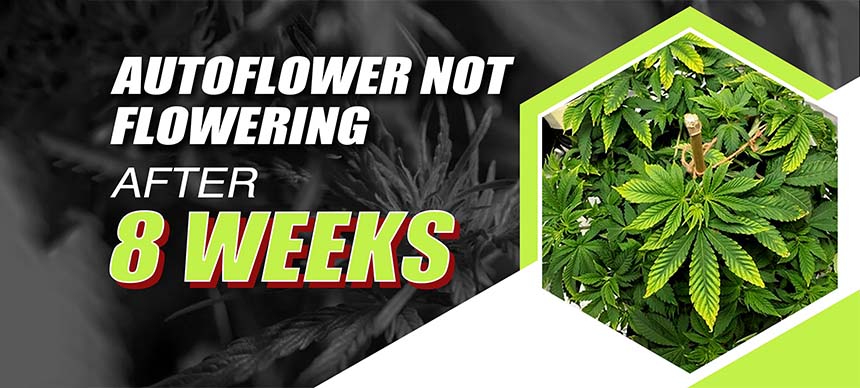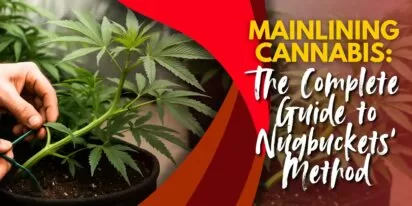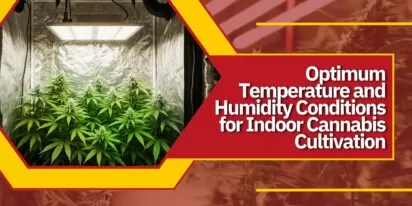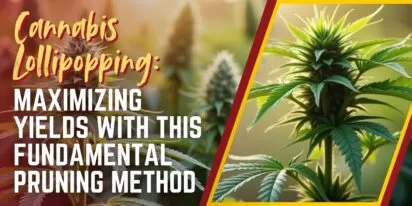Table of Contents
ToggleAutoflowering strains are the most ideal types—easy to love but sometimes a bit tricky to handle. Picture this: you’ve got your autoflowering cannabis plants, all set for the grand transition into the flowering stage, and then autoflower not flowering after 8 weeks happens. Frustrating, right? Even the green thumbs among us can find it perplexing. But hey, no need to panic! We’ve got your back, and we’re ready to break down the necessary things you can do. with some down-to-earth guidance and practical tips to ensure you avoid autoflower not flowering and also do it in style. Stick around, and let’s navigate this problem of autoflowers not flowering together!
Understanding the Basics – Photoperiod vs. Autoflowering Cannabis
Before delving into the intricacies of non-flowering autoflowers, let’s grasp the fundamental differences between photoperiod and autoflowering cannabis.
Photoperiod Cannabis
Photoperiod cannabis relies on manipulating light schedules to induce flowering. Adjusting the duration of light exposure accelerates the growth cycle and prompts the plants to produce buds. This manipulation is a delicate dance that demands precision, and it is a crucial aspect of photoperiod cultivation that distinguishes it from the more straightforward autoflowering counterparts.
Autoflowering Cannabis
Autoflowering cannabis, on the other hand, offers a revolutionary approach to cultivation. Enriched with Ruderalis genetics, these strains boast resilience, needing fewer nutrients and less care. Their flowering phase is time-dependent rather than light-dependent, making them an excellent choice for those seeking a more hands-off approach. Understanding the difference between these two types of cannabis is pivotal in crafting an effective cultivation strategy.
Advantages of Autoflowering Cannabis
Autoflowering strains offer a ton of advantages, making them an ideal choice for both novice and experienced cultivators.
Resilience: Derived from Ruderalis genetics, autoflowers exhibit robust survival skills, thriving in diverse climates. This resilience makes them suitable for growers facing unpredictable environmental conditions.
Time Efficiency: Autos enter the flowering phase autonomously, leading to a shorter overall cultivation time. This not only allows for quicker harvests but also provides flexibility in managing multiple growth cycles.
Low Maintenance: These strains demand less care and fewer nutrients compared to photoperiod varieties. For growers with limited time or resources, autoflowers present an appealing option for a successful harvest.
Early Harvest: Some autoflowers finish earlier than photoperiod strains, allowing for an expedited harvest. This advantage is particularly valuable for those cultivating cannabis for personal use or within a specific timeframe.
Troubleshooting – Why Is My Autoflower Not Flowering
When faced with autoflowers lingering in the vegetative stage, identifying the root cause is crucial for resolution. Let’s dissect potential issues and remedies.
1. Genetics
Quality genetics lay the foundation for successful cultivation. Acquiring seeds from reputable sources, such as Seedsman, minimizes the risk of genetic complications. Understanding the genetic makeup of your autoflowering strain ensures a strong start and sets the stage for a healthy flowering phase.
2. Light
Ensuring adequate light exposure is essential. Outdoors, shade hindering light absorption can impede flowering. Indoors, optimizing light spectrum, especially warm light during flowering, is imperative. Investing in quality lighting systems tailored to the specific needs of autoflowers can significantly impact their overall development.
3. Watering
Overwatering can lead to nutrient deficiencies and hinder flowering. Adopt a responsive watering approach, catering to the substrate’s moisture needs. Understanding the balance between hydration and nutrient uptake is vital for maintaining a thriving autoflowering garden.
4. pH Level
Maintain an optimal pH level, typically between 6.0 and 6.5 for soil. Deviations can disrupt nutrient absorption and impede flowering. Regularly testing and adjusting the pH of your growing medium ensures that the plants can efficiently absorb nutrients, fostering a conducive environment for flowering.
5. Nutrients
Precise nutrient management is vital. Inaccurate nutrient levels can thwart flowering. Adhere strictly to recommended feeding guidelines. Understanding the nutrient requirements at each stage of an autoflower’s life cycle is essential for promoting healthy growth and robust flowering.
6. Dark Cycle Interruption
Ensure an uninterrupted dark cycle during the flowering phase. Even minor light leaks can disrupt hormonal balance, affecting flowering. Implementing blackout measures in your cultivation space, such as light-proofing grow tents, safeguards the natural progression of autoflowers into the flowering stage.
Strategies to Induce Flowering
If your autoflowers persist in vegetative growth, strategic interventions can stimulate flowering.
1. Wait
Exercise patience; sometimes, autos may experience delays in entering the flowering phase. Allowing an additional week or two may resolve the issue. Monitoring plant development during this period provides valuable insights into the specific needs of your autoflowers.
2. Adjust Light Schedule
Counterintuitive as it may seem, transitioning to a 12/12 light cycle can shock autos into blooming. Regularly check nodes for pre-flowering signs. This intervention simulates a natural shortening of the season, prompting autoflowers to accelerate their development and transition into the flowering stage.
3. Maintenance Review
Evaluate your cultivation environment comprehensively. Optimize lighting, temperature, pH, and nutrient levels to create an ideal setting for auto plants. Conducting regular maintenance reviews minimizes potential stressors, ensuring a stable and conducive environment for autoflowers to thrive.
Conclusion
Cultivating autoflowering cannabis requires careful consideration of genetics, environmental conditions, and timely interventions. It’s like crafting a unique recipe—get the ingredients right, follow the steps, and your end result will be a flourishing cannabis plant living up to its autoflowering potential. Stick to these straightforward guidelines, and you’re essentially laying down a green carpet for your plant’s success. Your journey in cannabis cultivation is an exciting adventure, and with these key factors in mind, you’re on the right track to success. Best of luck and have fun in your cultivation.
FAQs
1. Can I Switch Autoflowers to a 12/12 Light Cycle from the Beginning?
No, it’s not recommended. Autoflowers don’t need a specific light schedule to flower, and starting them on a 12/12 cycle from the beginning can hinder their growth.
2. Do Autoflowers Require Different Nutrients than Photoperiod Strains?
While the nutrient needs are similar, autoflowers are often more forgiving. However, it’s crucial not to overfeed them, as they can be sensitive to nutrient excess.
3. Can I Grow Autoflowers and Photoperiod Cannabis Together?
Yes, but it requires careful planning due to their differing light needs. Consider separate spaces or light schedules to accommodate both types effectively.
4. Why Is pH Level Important for Autoflowers?
pH affects nutrient absorption, and maintaining the right pH level (around 6.0 to 6.5 for soil) ensures that autoflowers can access essential nutrients for healthy growth.
5. Do Autoflowers Always Flower Automatically, or Can I Force Flowering Early?
While they usually flower automatically, if you’re eager to speed up the process, adjusting the light schedule to 12/12 can act as a catalyst, encouraging autoflowers to enter the flowering stage sooner.















